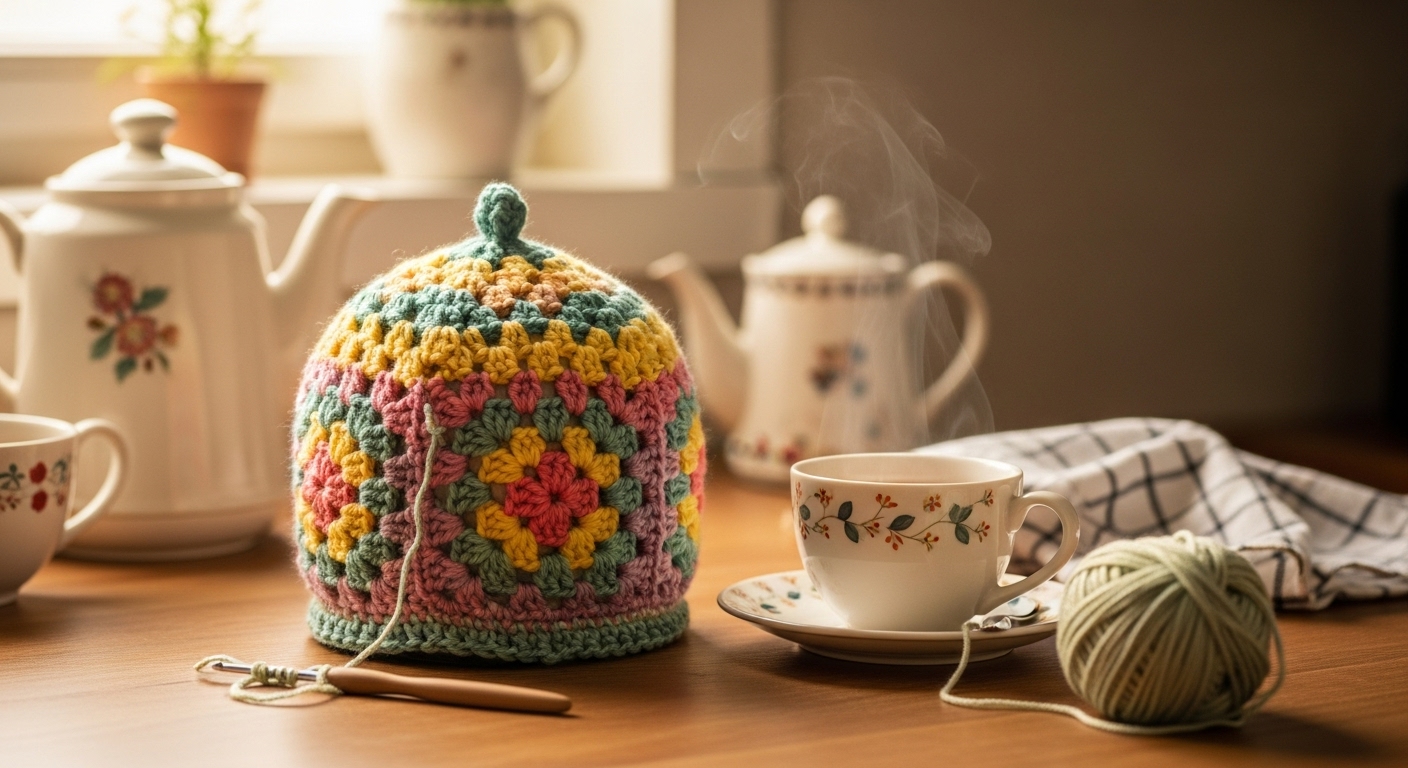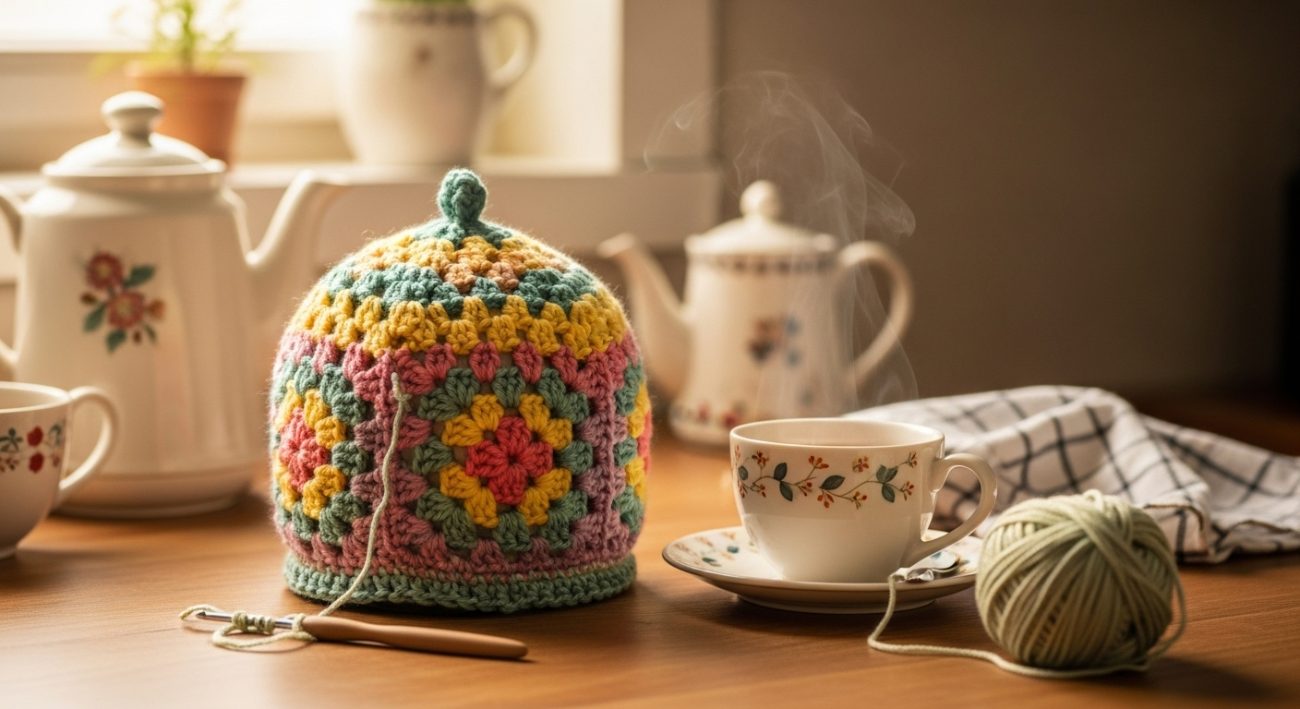The Quiet Comfort of Kitchen Crochet
In the gentle rhythm of daily life, the kitchen often serves as the heart of the home. It’s a place of simmering soups, warm conversations, and the quiet clinking of dishes. In this space of nourishment and care, there is a special place for the handmade. Among the stainless steel and ceramic, a soft, handcrafted item brings a unique sense of warmth and tranquility. This is the quiet joy of kitchen crochet: the simple, mindful creation of dishcloths and pot holders.
These projects are more than just utilitarian items; they are small, tangible expressions of care—for your home, for your family, and for yourself. The process of creating them is a slow, meditative practice, and their use in daily chores adds a soft, personal touch to the most routine tasks.

Why Crochet for the Kitchen?
You might wonder, with countless mass-produced options available, why choose to crochet your own kitchen accessories? The reasons are as layered and comforting as a well-made granny square.
First, there is the superior functionality. A cotton crochet dishcloth is remarkably absorbent and provides just the right amount of gentle abrasion for scrubbing, without scratching delicate surfaces. Unlike synthetic sponges that can harbor bacteria, 100% cotton is naturally hygienic and can be tossed in the washing machine with your laundry, emerging fresh and clean, ready for another day’s use.
Then, there is the durability. A tightly stitched crochet pot holder is a trusted shield against heat, far more reliable and insulating than a thin, store-bought counterpart. It’s a small, handmade safeguard for your hands, born from your own patience and skill.
But beyond the practical, there is the personal. A handmade item carries an intention. Each stitch is a moment of your time, a quiet thought. Using a cloth you made while washing the morning coffee cups turns a chore into a moment of connection with your own creativity and care. It’s a small, daily mindfulness practice.
A Stitch in Time: The Calm of the Process
Crocheting a dishcloth or pot holder is the perfect project for finding a moment of peace. These projects are small and portable, easily picked up during a quiet morning with tea or in the evening while listening to music. The repetitive nature of the stitches—the steady in-and-out motion of the hook—becomes a form of meditation. It allows the mind to rest, to focus on the simple, tactile reality of the yarn and the growing fabric in your hands.
There is no rush. There is only the next stitch, and the next, building row upon row. In a world that often feels frantic, this slow, deliberate creation is a gentle rebellion. It is a reminder that some of the best things—a warm meal, a clean home, a beautiful object—take time and cannot be hurried.
Choosing Your Materials: A Touch of Natural Softness
The foundation of any good kitchen project is the yarn. For items that will encounter water, heat, and frequent washing, the choice is simple: 100% cotton.
Cotton yarn is a natural fiber that is strong, absorbent, and becomes even softer with each wash. It is also heat-resistant, making it ideal for pot holders. When selecting your yarn, look for brands specifically labeled for kitchen use or “kitchen cotton.” These are typically sturdy, worsted-weight yarns that work up quickly into a dense, durable fabric.
You will also need a crochet hook, usually a size H/8 (5.0 mm) or I/9 (5.5 mm), which pairs perfectly with worsted-weight cotton. Beyond that, all you need is a pair of scissors and a yarn needle for weaving in your ends. The simplicity of the tools is part of the charm.
Two Simple Patterns to Begin Your Journey
Here are two foundational patterns to introduce you to the craft. They use basic stitches to create timeless, useful items.
The Classic Granny Square Pot Holder
The granny square is a cornerstone of crochet, and for good reason. It’s versatile, beautiful, and wonderfully simple to master. For a pot holder, its layered construction provides excellent heat protection.
You will need:
One skein of worsted-weight cotton yarn (using two contrasting colors is lovely)
Crochet hook size H/8 (5.0 mm)
Yarn needle
Instructions:
Foundation Ring: With your first color, make a magic ring or chain 4 and join with a slip stitch to form a ring.
Round 1: Chain 3 (counts as first double crochet). Work 2 double crochets into the ring. Chain 2, work 3 double crochets into the ring. Repeat from * to * two more times. Chain 2, and join with a slip stitch to the top of the beginning chain-3. You should have four groups of 3-double crochets, separated by chain-2 spaces. Fasten off the first color.
Round 2: Join your second color in any chain-2 space. Chain 3 (counts as first double crochet). In the same space, work 2 double crochets, chain 2, and 3 double crochets. This forms your first corner. *In the next chain-2 space, work (3 double crochets, chain 2, 3 double crochets).* Repeat from * around. Join with a slip stitch to the top of the beginning chain-3.
Round 3: Continue in the same manner. In each corner chain-2 space, work (3 double crochets, chain 2, 3 double crochets). Along the sides, work 3 double crochets in the space between the 3-dc groups from the previous round. You can continue for one or two more rounds until the square is your desired size.
Finishing: Weave in all ends. For added heat resistance, you can crochet a second, identical square and slip stitch the two together around the edges.
The Simple Textured Dishcloth
This pattern uses a combination of stitches to create a lovely texture that is both beautiful and practical for scrubbing.
You will need:
One skein of worsted-weight cotton yarn
Crochet hook size I/9 (5.5 mm)
Yarn needle
Instructions:
Foundation: Chain 32.
Row 1: Double crochet in the 4th chain from the hook and in each chain across. Turn. (You should have 30 stitches).
Row 2: Chain 3 (counts as first double crochet). Front post double crochet around the next stitch, double crochet in the next stitch. Repeat from * across until the last stitch. Double crochet in the last stitch. Turn.
Row 3: Chain 3 (counts as first double crochet). Back post double crochet around the next stitch, double crochet in the next stitch. Repeat from * across until the last stitch. Double crochet in the last stitch. Turn.
Repeat Rows 2 and 3: Continue alternating Row 2 and Row 3 until your cloth is square (approximately 12-14 rows total).
Edging: When you are satisfied with the size, work a simple border. Single crochet evenly around the entire dishcloth, working 3 single crochets in each corner to help it lay flat. Join with a slip stitch and fasten off. Weave in your ends.
Weaving Warmth into Everyday Life
As you complete your first dishcloth or pot holder, take a moment to appreciate it. Feel its weight, its texture. Notice the slight imperfections that make it uniquely yours. These are not flaws; they are the signature of the handmade.
Then, put it to use. Let it dry your favorite mug. Let it protect your hand as you pull a fragrant loaf of bread from the oven. In these small, daily acts, your crochet project fulfills its purpose. It becomes a quiet, comforting presence in your kitchen, a small island of handmade calm in the flow of everyday life. It is a gentle reminder that you can create not just objects, but moments of peace, one simple stitch at a time.
